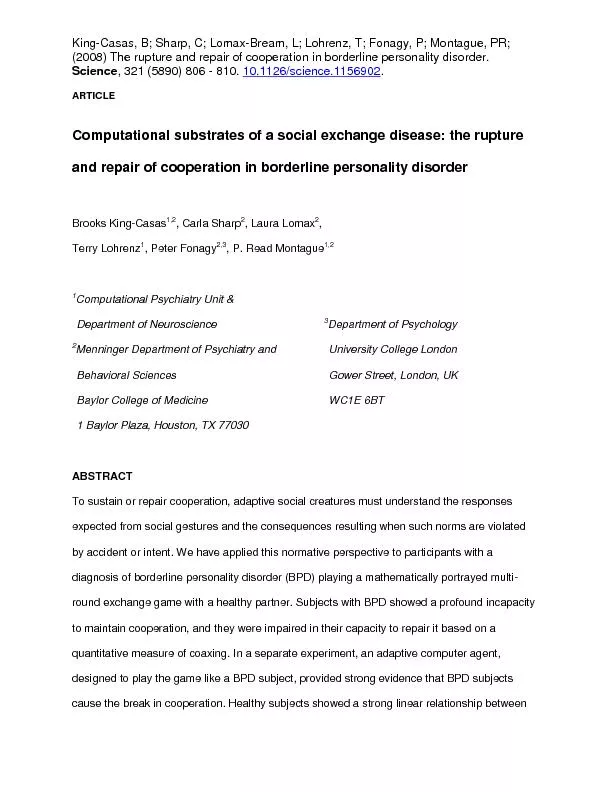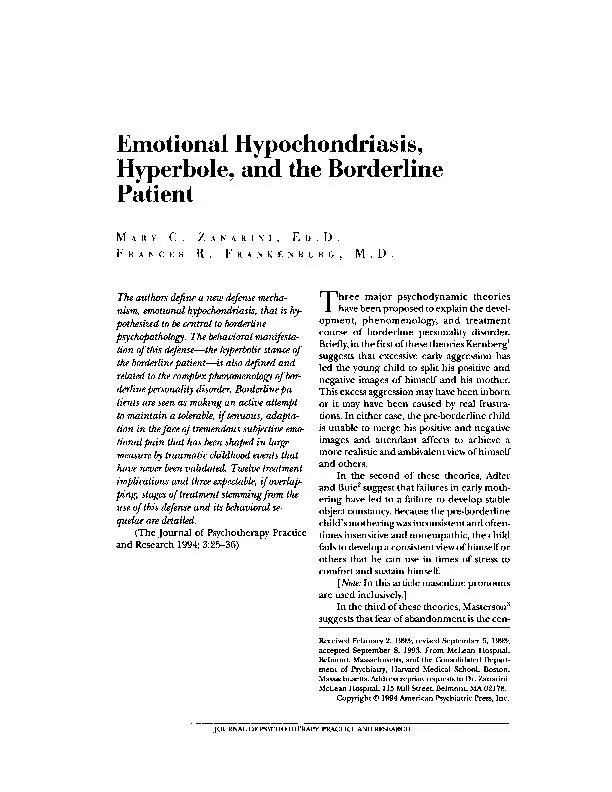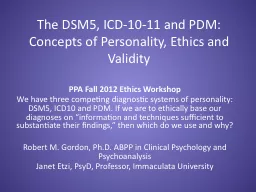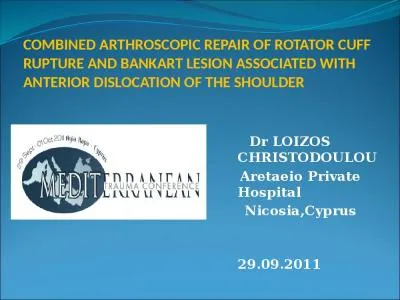PDF-(2008) The rupture and repair of cooperation in borderline personality
Author : alexa-scheidler | Published Date : 2016-05-21
King Casas B Sharp C Lomax Bream L Lohrenz T Fonagy P Montague PR Science 321 5890 806 810 101126science1156902 ARTICLE Computational substrates of a
Presentation Embed Code
Download Presentation
Download Presentation The PPT/PDF document "(2008) The rupture and repair of coopera..." is the property of its rightful owner. Permission is granted to download and print the materials on this website for personal, non-commercial use only, and to display it on your personal computer provided you do not modify the materials and that you retain all copyright notices contained in the materials. By downloading content from our website, you accept the terms of this agreement.
(2008) The rupture and repair of cooperation in borderline personality: Transcript
Download Rules Of Document
"(2008) The rupture and repair of cooperation in borderline personality"The content belongs to its owner. You may download and print it for personal use, without modification, and keep all copyright notices. By downloading, you agree to these terms.
Related Documents














